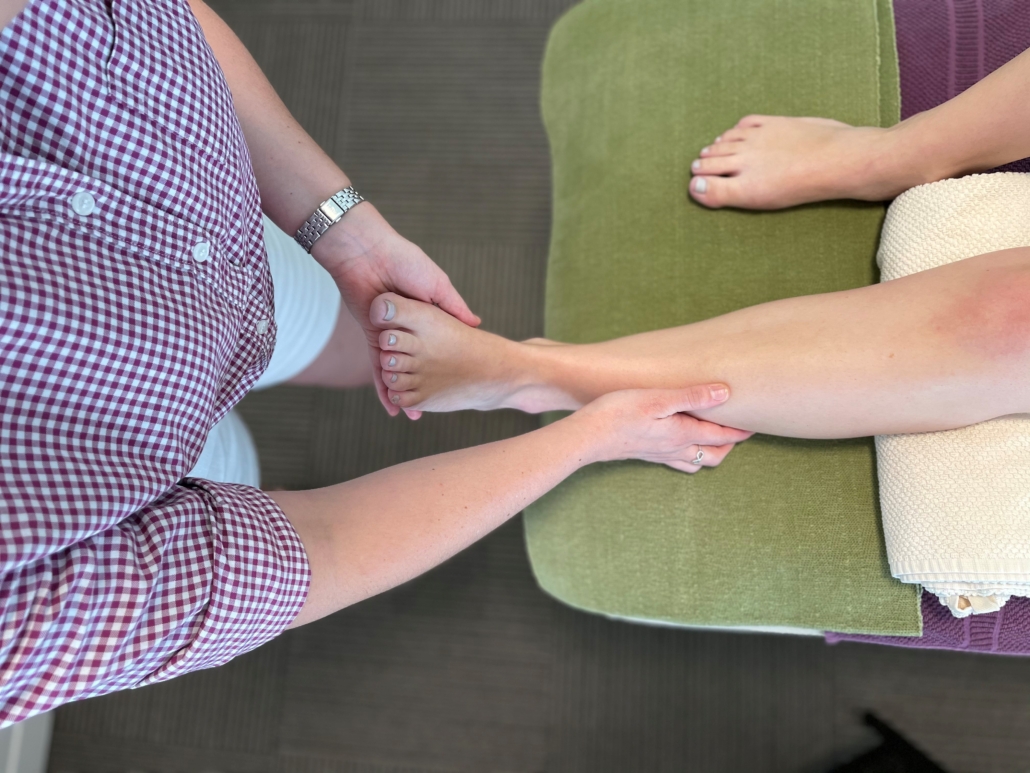Posts
Fat Ankles from Flying
in Barefoot Lifestyle, Case Study TreatmentDo you suffer Fat Ankles from Flying? With both domestic and international flights back on the cards, more and more of us are flying. Sometimes these trips can be longer than 2 hours, reaching 13 hours for a long-haul flight, which also might be followed by even more flying. Prolonged sitting, lack of movement, dehydration, pressure on the hips and hamstrings can all contribute to fat ankles from flying.
Sometimes no matter how much you try and move around, swollen ankles can still result.
So, why do we get fat ankles from flying, especially on those long trips? Is this dangerous? How do we prevent it?
Let’s start with why this happens. Whenever we are sitting for a long period of time in a plane, the muscles in our legs that are usually responsible for pumping blood and fluid back up are legs are not being used at all. Over time, this will lead to an increase in fluid and blood pooling in our lower limbs (ankles).
Additionally, on long flights in a low air pressure aircraft cabin, it is easy to forget to drink water. Firstly, the stress of flights sometimes makes an alcoholic beverage a more appealing choice, and secondly a lot of people avoid too much water because they do not want to be getting up and going to the toilets on a regular basis while flying. This makes it very easy to become mildly dehydrated on airplanes. Being dehydrated can reduce your blood circulation, making it that much easier for fluid to pool in your ankles on those long flights.
Is this dangerous? The ankle swelling itself is not dangerous, however the reasons which cause it can also cause things like blood clots or deep vein thrombosis (blood clot in your calf), which can be seriously dangerous and has the potential to cause death. So although the ankle swelling itself is not a reason for concern, the reasons which caused the ankle swelling is definitely reason enough to take it seriously and take any necessary precautions to prevent it.

How do we prevent it?
- The biggest thing you can do to prevent poor circulation and subsequent ankle swelling is movement. Aim to get up on a half hourly basis (Assuming you are not asleep) for a walk around the cabin. Aim to be up walking for at least 3-5 minutes each time.
- It is crucial to stay hydrated. This means drinking water before and during the flights. Even if you are having a glass of wine or a beer, try and also have a bottle of water on the go as well.
- It is important to keep your feet and legs moving as much as possible even while you are seated. Pump your ankles from side to side and up and down on a regular basis.
- Some people wear compression stockings while flying to prevent blood clots in their legs. There is evidence suggesting that wearing these stockings can significantly reduce your chance of a blood clot which is great, however it is important to remember that stockings are NOT a substitute for any other of the above precautionary measures, most importantly exercise and frequent movement on a plane.
- There is research that suggests taking aspirin during your flight slightly thins the blood, reducing the chance of deep vein thrombosis and swelling. However, we strongly recommend checking with your doctor before flying if this is right for you.
- Holding or placing your feet above your heart is obviously a great way to keep the blood from pooling in your feet and ankles. If you can, see if you can lift your knees and legs up high, placing them on the seat in front of you – obviously trying not to annoy the passenger in front of you. Handstands in the space outside the toilets or galley is also a fun way to get the blood moving – don’t knock over the food cart!
- After your flight, when you finally get to lie down, put your legs up the wall. This is awesome to drain the legs lymphatic system, encourage oxygenated blood to circulate up the legs and feet.
- Post-flight massage is also a great way to alleviate any swelling. You could do this yourself, or find somewhere close by that you can walk to. The gentle practice of just walking will also assist the body in circulating the blood.
Of course if the swelling doesn’t go down and/or you’re feeling any discomfort or pain, visit a health care practitioner as soon as you can. We’re also here to help, either with some specific treatment before or after you fly. All of our Physios are very well versed in the affects of flying, and are ready to help you make you feel amazing any time you need. Click Here to book online now.

Acknowledgement of Country
Barefoot Physiotherapy proudly operates on Jagera and Turrbul land. We acknowledge Traditional Owners of Country throughout Australia and recognise the continuing connection to lands, waters and communities.
We pay our respect to their Elders past and present and extend that respect to all Aboriginal and Torres Strait Islander peoples today.





